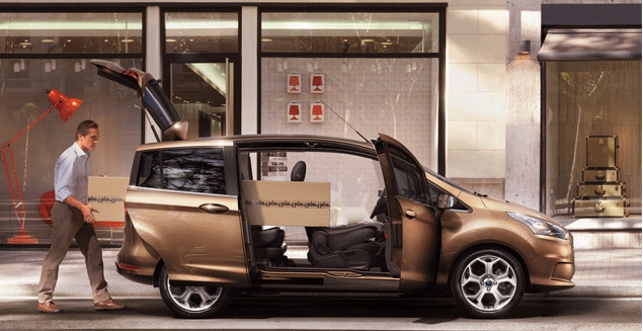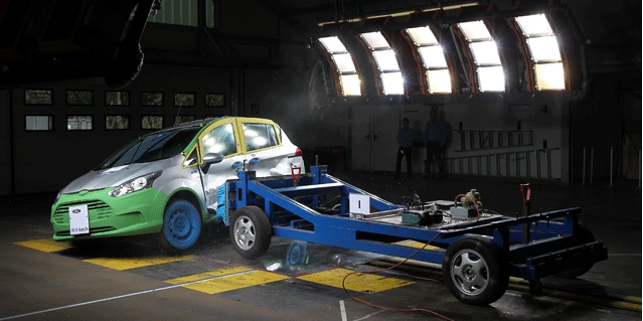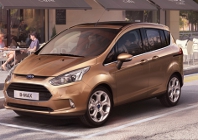Cushion the blow
Airbags are a lifesaver, with the B-Max having the now usual driver and passenger fittings. It also has special airbags fitted to protect the leg/knee area, and side ‘curtains’ that deploy in a fraction of a second.

Ford B-MAX with ingenious door design
Brain power
The car is fitted to handle a collision before it even happens: it senses a collision using LIDAR sensors, cutting engine torque, applies braking and tenses seatbelts.
Simulation
Finite Element Analysis (FEA) using Hyperworks’Radioss means that Ford can quickly simulate a crash and the reaction of individual components thousands of times. This data can be flipped back and forward between the simulation and design models in Catia, before actual cars are then crashed in its purpose-built facility in Germany.
Extra support
Extra strength is added via horizontal beams in the door. Designed in like the rest of the car in Catia, these give extra strength and support.
Pillar to post
The B-pillar is still here, however it’s now a mobile structure part concealed in the connecting
sections of the doors, using high tensile steel. Two ‘intelligent’ locks secure it during normal everyday use, with a ‘dumb’ lock sealing the pillar if impacted from the side.

In-house safety testing
Tied up
Removing the B-pillar means that the entire seatbelt configuration has to be relocated. Ford’s designers completely redesigned the front seats to encase the tensioning mechanism.
Space age
By removing the B-pillar, and using a sliding rear door, the user has an enormous amount of space in which to help load the car, secure a baby seat, or just to help with passenger access,all tested using Ramsis ergonomics software.
Alert
In the aftermath of a crash,the car – connected to the driver’s mobile phone – calls the emergency services telling them exactly where it has taken place using inbuilt GPS.
Chassis
The car is built on Ford’s B-platform, the same as its other small city cars, such as the Fiesta.
The B-Max – How Ford designed one of its safest family cars ever
Default






